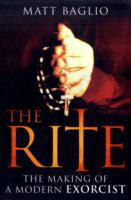Christmas Holly Origins And Beliefs
Mythology/Folklore/History
Tuesday 28th, November 2023
3 minute read.
Why do we hang holly around our homes and on our doors at Christmas time? Is it just tradition or is there more behind the widely used plant at this time of year?
Lets go a bit back in time to the Druids, where the Druids considered holly to be a sacred plant. This sacred belief is thought to have come from holly's strong green colour and bright red berry colours in harsh winter months as most of the plants wilted and died.
Holly was regarded by the Druids as a symbol of eternal life and fertility and was thought to have magical powers. It was considered a big no no to cut down a holly tree as it was believed it would bring bad luck. On the flip side it was thought that hanging holly around the home would bring good luck and protection through the dark and cold winter nights.
Druids would use tea brewed with holly leaves to treat a wide range of medical conditions such as arthritis, kidney stones, and bronchitis.
One of the stories associated to holly is an old Celtic legend which tells of to twin brothers who didn't get along, the Holly King and the Oak King. The legend goes that the Holly King was seen as a giant bearing a crown made out of holly and he would carry a club made of holly wood.
The Holly King would gradually assume power every Autumn/Fall and with it bring winter to the world. Then when it came around to the winter solstice the two brothers would fight and the Oak King would win by killing his brother the Holly King.
The Oak King would now take over ruling the world and usher in the summer months. And then every summer solstice the bothers would fight and the Holly King would triumph over his brother the Oak King and so on.
Some further background and beliefs on holly and it's origins based in Christian beliefs,
Lets go a bit back in time to the Druids, where the Druids considered holly to be a sacred plant. This sacred belief is thought to have come from holly's strong green colour and bright red berry colours in harsh winter months as most of the plants wilted and died.
Holly was regarded by the Druids as a symbol of eternal life and fertility and was thought to have magical powers. It was considered a big no no to cut down a holly tree as it was believed it would bring bad luck. On the flip side it was thought that hanging holly around the home would bring good luck and protection through the dark and cold winter nights.
Druids would use tea brewed with holly leaves to treat a wide range of medical conditions such as arthritis, kidney stones, and bronchitis.
One of the stories associated to holly is an old Celtic legend which tells of to twin brothers who didn't get along, the Holly King and the Oak King. The legend goes that the Holly King was seen as a giant bearing a crown made out of holly and he would carry a club made of holly wood.
The Holly King would gradually assume power every Autumn/Fall and with it bring winter to the world. Then when it came around to the winter solstice the two brothers would fight and the Oak King would win by killing his brother the Holly King.
The Oak King would now take over ruling the world and usher in the summer months. And then every summer solstice the bothers would fight and the Holly King would triumph over his brother the Oak King and so on.
Some further background and beliefs on holly and it's origins based in Christian beliefs,
Early Christian calendars mark Christmas Eve as templa exornatur, meaning “churches are decked,” though supposedly Saturnalia celebrators didn’t allow some Christians to hang boughs in honor of Christmas. Christians adopted the holly tradition from Druid, Celtic and Roman traditions, and its symbolism changed to reflect Christian beliefs.
Today, Christians consider holly symbolic of Jesus Christ in two ways. The red berries represent the blood that Jesus shed on the cross on the day he was crucified. Legend states that holly berries were originally white, but that the blood Christ shed for the sins of humankind stained the berries forever red. A holly's pointed leaves symbolize the crown of thorns placed on Jesus' head before he died on the cross.
Holly is known as christdorn in German, meaning "Christ thorn." Both of these symbols are meant to serve as a reminder to Christians of Jesus' suffering, but they aren't the only stories tying holly to Jesus. One claims that the cross on which Jesus was crucified was constructed of holly. Another says that holly sprang up from his footsteps. Less common symbolism includes the holly's white blossoms representing purity, and the idea that if the holly used to decorate a home for Christmas is prickly, the man will rule the house for the coming year; but if the holly used is smooth, the woman will rule.



